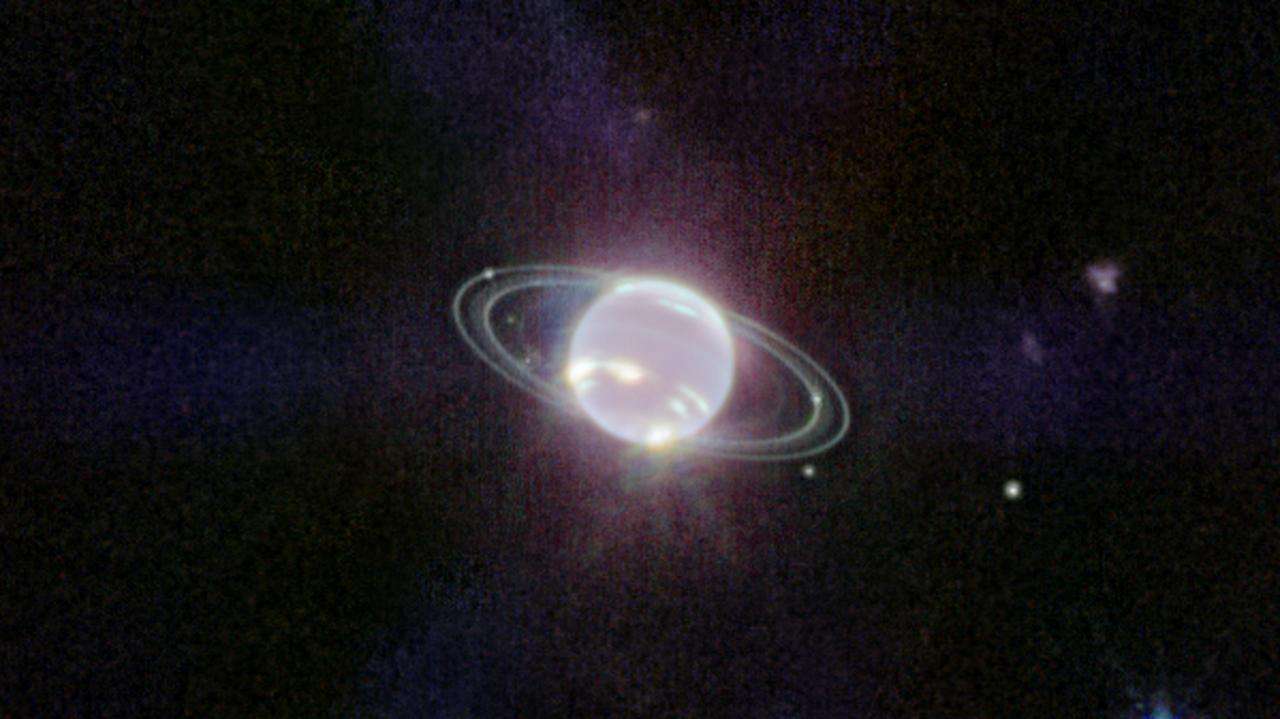Webb’s image shows Neptune’s rings more clearly than in decades. Through its first image of Neptune, NASA’s James Webb Space Telescope demonstrates its capabilities on a much more familiar scale. Webb’s cameras not only provide the best glimpse of this faraway planet’s rings in more than 30 years but also shed new insight on the ice giant.
The rings of Neptune, some of which had not been seen since the first spacecraft to observe the planet, NASA’s Voyager 2, flew by in 1989, are the most stunning feature of Webb’s new photograph. The Webb image reveals Neptune’s fainter dust bands in addition to many brilliant, narrow rings.
“This is the first time we’ve detected these weak, dusty rings in the infrared,” says Heidi Hammel, a Neptune system expert and transdisciplinary scientist with Webb. These incredibly weak rings may be observed so close to Neptune because of Webb’s exceptionally consistent and precise image quality.
The near-infrared band from 0.6 to 5 microns is where Webb’s Near-Infrared Camera (NIRCam) captures photos, hence Neptune is not blue to Webb. Actually, the planet is quite black at these near-infrared wavelengths, especially in the presence of high-altitude clouds, because the methane gas absorbs red and infrared light so powerfully. These methane-ice clouds are easily recognizable as brilliant streaks and patches because they reflect sunlight before the gas in the atmosphere can absorb it. Rapidly changing cloud features have been captured in images from other observatories, such as the Hubble Space Telescope and the W.M. Keck Observatory.
A faint brilliant band around Neptune’s equator may be an indicator of the worldwide atmospheric circulation that drives the planet’s winds and storms. Atmospheric infrared emission is enhanced because the atmosphere warms and sinks toward the equator.
Since Neptune orbits the sun every 164 years, the planet’s north pole is obscured in this image. However, the Webb photographs suggest an unusual brightness in that region. Webb’s image confirms the existence of a well-established vortex near the southern pole, but for the first time, it also shows a continuous ring of high-latitude clouds surrounding the vortex.
Webb also managed to snap images of seven of Neptune’s fourteen known moons. A very bright point of light, with the characteristic diffraction spikes found in many of Webb’s photos, dominates this portrait of Neptune by Webb. This is actually Triton, Neptune’s massive and peculiar moon.
Typically, over 70% of the sunlight that strikes Triton is reflected due to its surface being covered in a frozen sheen of condensed nitrogen. Methane absorption at these near-infrared wavelengths causes the atmosphere of this planet to darken, making Uranus appear much brighter in this view than Neptune.
Astronomers believe that Triton was originally a Kuiper belt object that was gravitationally caught by Neptune due to its peculiar backward (retrograde) orbit around the planet. In the next year, more Webb observations of Triton and Neptune are scheduled.
As far as space observatories go, the James Webb Space Telescope is unrivaled. Webb will investigate the origins of the universe, the structure of the universe, and the existence of other worlds beyond our solar system. NASA’s foreign partners, the European Space Agency (ESA) and the Canadian Space Agency, are integral to the success of the Webb program.

